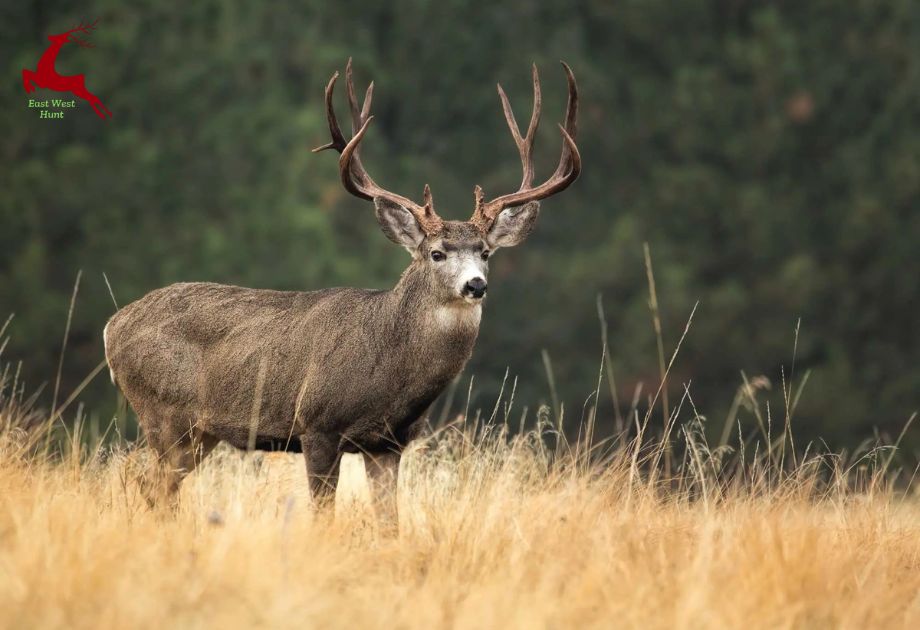Tens of thousands of resident and non-resident mule deer hunters in eastern Oregon must make decisions for this fall’s deer hunts and must be aware of major changes underway for 2026.
The changes could affect how they apply their prized preference points or this year.
The Oregon Fish and Wildlife Commission will discuss in September a change in mule deer hunts from designated wildlife management units to the real ranges used by highly migratory mule deer.
For the hunts or tag counts this year, nothing will change.
In 2026 all mule deer seasons – rifle/any weapon, archery, antlerless, youth and muzzleloader will be impacted. While hundreds more applied unsuccessfully, the 2025 total for tags issued is 56,543.
The suggested modification is just mule deer hunting. Current wildlife management unit limits will still apply to areas including Elk, antelope, bighorn sheep, bear and Rocky Mountain goat ranges.
In essence, state wildlife experts have been tracking mule deer movements inside the designated management areas using radio collars and found almost none of the units (formed pre-GPS in the 1950s) fairly represent how established herds react and travel from one season to the next.
Now the trick will be to overlay hunter success inside the new hunt areas and then apply harvest statistics into their management equations for buck and doe ratios in hopes of arresting a region-wide and broad interstate drop in mule deer numbers.
Although no one knows exactly how many less tags would be available next year, Michelle Dennehy, department spokesman, said it is most certainly less. Year to year changes in numbers as the system is adjusted to represent harvests and interest.
“We are letting everyone know in case they are set on a particular hunt and may wish to use their preference points, or to get ahead of uncertainty about how the draw will look once the changes are implemented,” she said. “In 2026, they can still hunt where they want, but the boundaries will be different.”
Again, no changes are in store for this year and no modifications will be recommended in the preference point system; nonetheless, it is likely hunts and tag numbers may appear different.
The tag application date falls on May 15.
The Pacific Fishery Management Council will convene over next weekend, April 10-15, to consider and subsequently approve future salmon seasons for the ocean.
Discussed Thursday in a pre-council process called North of Falcon, guidelines for Buoy 10 and the Columbia River will also be taken under discussion.
Managers are looking at Columbia River and Buoys 10 seasons comparable to last year’s and offshore seasons providing fishing along the entire coast for both coho and chinook, including off the mouth of the Columbia.
Among others, (Hats off to Oregon, which apparently dug its heels in and effectively opposed a California attempt to ban all chinook fishing south of Cape Falcon to conserve salmon going for the Klamath and Sacramento systems.)
Back at spring chinook, fishing has been slower than usual in a lower Columbia River covered in muck from east Oregon and Washington.
Slowness:
Out of 67 other competitors, the first salmon derby victor for the year from lower Washington (Wahkiakum County) ports caught the solitary fish.
five pounds rather than a five-pounder
Oregon and Washington biologists think catches have been inadequate; so, they might be able to authorize more fishing in the Columbia and set a meeting Wednesday to assess the possibilities.
Clarification: Clearly implying 2025, a recent column wrongly stated Oxbow Regional Park will close after Labor Day, should you have missed the correction.
Actually scheduled for 2026 is the real closure—probably for only a few months.
Metro has announced the heads-up a year in advance to give companies, fishing guides, park users enough lead warning to create backup plans.
Darwin vs. high-tech: Oregon State Police Fish and Wildlife Division officials still document angler ticketing following their catch.
The most recent was an angler on a coastal river who reported his smartphone was back in his car but had a legal steelhead.
About ten minutes later, he returned to demonstrate the trooper the accurate entry into the automated system.
The officer searched it and wrote the angler a citation after showing him the fish tagged five minutes ago.

